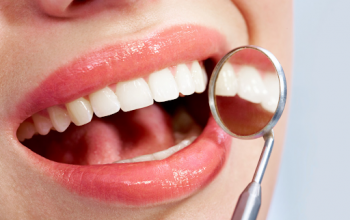
Taking your young one to a dentist can be a daunting experience for the child. Parents sometimes second guess themselves, wondering whether to book an appointment when teeth first crop up, or when they have a serious problem that demands professional evaluation.
Information from professionals in dentistry suggests that you should introduce your young one to the dentist as soon as possible. The American Association of Pediatric Dentistry (AAPD) recommends taking your child to a kids dentist by either age one, or when the teeth first start to develop.
Why Visit a Kid’s Dentist Early?
Toddlers and young children generally, do not like going to a dentist. They are sensitive to unfamiliar noises, strange instruments, and people can be intimidating for a child. Depending on the nature of the first experiences, fear can become more intense and problematic.
There are several reasons as to why the AAPD recommends visiting the dentist at one year and not later than two years of age. First, these initial experiences can shape how the individual perceives the dentist office in later years. Since visiting a dentist is critical for dental health, these perceptions can increase the risk of cavities and gum disease.
Purpose of the First Visit
The first visit is reserved for introducing the child to the environment of a dentist’s office. It is about establishing trust and familiarity. Professional orthodontists usually let kids explore the room and may even let them play with some tools.
After your young one has played with the chair and explored the office, they may now be introduced to the language. A dentist may develop a simplified language to facilitate communication with the toddler. For example, the orthodontist may refer to the drill as a tooth explorer. The words and phrases used are simple and non-threatening.
Successive Visits
It is only after the baby is comfortable with the environment that the dentist can begin the dental examination. To ensure that they are even more comfortable, you may be asked to hold the baby as the orthodontist examines them.
Even toddlers can develop dental health issues that need professional treatment from a pediatric dentist. Some of the complications may include:
- Baby Bottle Tooth Decay: A one-year-old baby can develop cavities due to the constant use of the baby bottle. Parents are advised to feed their children only when they are hungry. Otherwise, their teeth are constantly exposed to the sugars in the milk.
- Thumb Sucking: Thumb sucking is common in babies. But it can continue into later years, even past age five. The problem with the habit is that it can affect the alignment of the jaws and teeth. It can also change the structure of the upper roof of the mouth. A kids dentist in McKinney, TX, can train parents on how to use positive reinforcements to break the habit.
- Overbite: An overbite is where the teeth overlap causing problems with biting and chewing. It can happen to both adults and children. Children may have an overbite because of the prolonged use of a pacifier, thumb sucking, or it may be due to the disproportional development of teeth. A pediatric dentist may recommend Invisalign braces to remedy an overbite and re-align the teeth.
- Trauma and Cavities: Children may also lose their teeth as a result of an accident or injury. An injury to the jawbone can lead to other complications such as teeth grinding. The misalignment of teeth from prolonged thumb sucking may also lead to tooth decay and gum deterioration, at that these early years of the toddler’s life.
How to Prepare for the First Visit to a Kid Dentist in McKinney TX
Before looking for a kids dentist, take time to prepare. Talk to your child about the visit to the dentist and encourage a positive outlook. Also, parents should prepare questions before the appointment. There is a lot you as the parents can learn about their kid’s health from orthodontists. Last but not least, make a point of going to a kids dentist who is friendly and patient with children. Go to a professional who can alleviate the fears and make the experience fun and enjoyable.



